Before installing the antenna on the tower, a couple of things needed to be done. The Bradford Pear tree next to the tower had started growing into and around the tower. It needed to be trimmed in order for the antenna to swing around on the horizontal mast of the PVRC mount. I wasn’t crazy about hanging from the tower and standing on my extension ladder with a chainsaw, but I took extra safety precautions and successfully trimmed the tree one day after work. It needs more work but that can be done later.
Also, the Cushcraft D3W rotatable dipole (which I use only on 30 meters) and the Pixel receiving loop (both shown in Photo 1) needed to be removed.
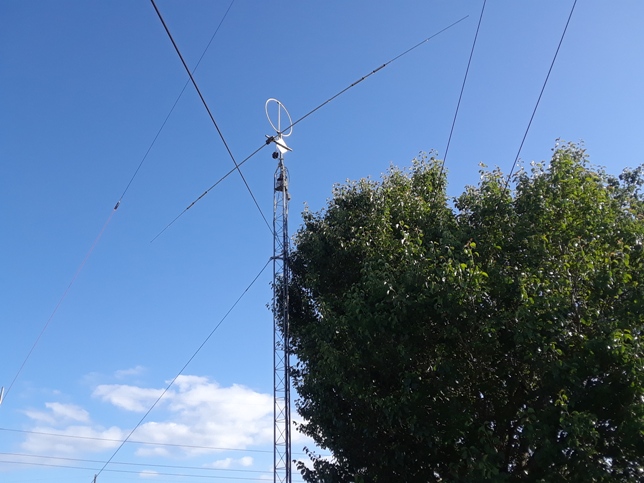
After work on April 26, I removed the Pixel loop receiving antenna and Cushcraft D3W dipole from the tower.
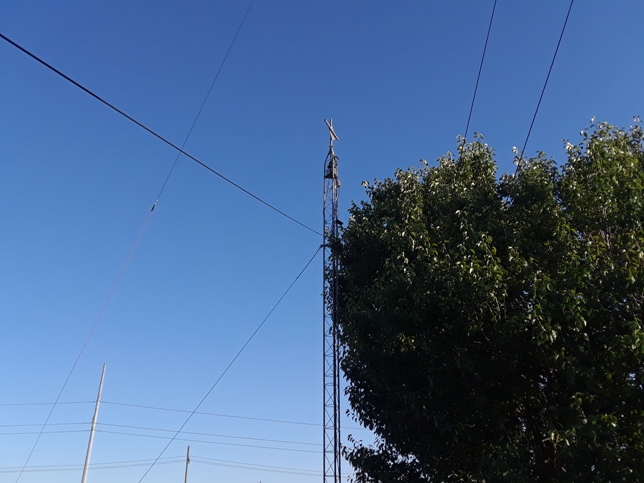
Before installing the SteppIR yagi, I wanted to see if I could repair my Cushcraft D40 rotatable dipole and temporarily install and test it while there were no other antennas on the tower. The D40 took a direct lightning strike back in 2010. It disintegrated one of the loading coils and blew up one of the center support insulators. I had gotten a replacement coil but could never get the antenna to resonate because I didn’t have an antenna analyzer. More
With no antennas on the smaller tower, this presented an excellent opportunity to see if I could get the D40 working again. So that’s what I did on Saturday, April 28th. With the antenna reassembled on saw horses in the backyard, I connected an antenna analyzer to it. To my complete surprise, the antenna was resonant somewhere just above 7100 kHz while on the ground. You can only imagine how excited I was. I proceeded with installing it on the tower.
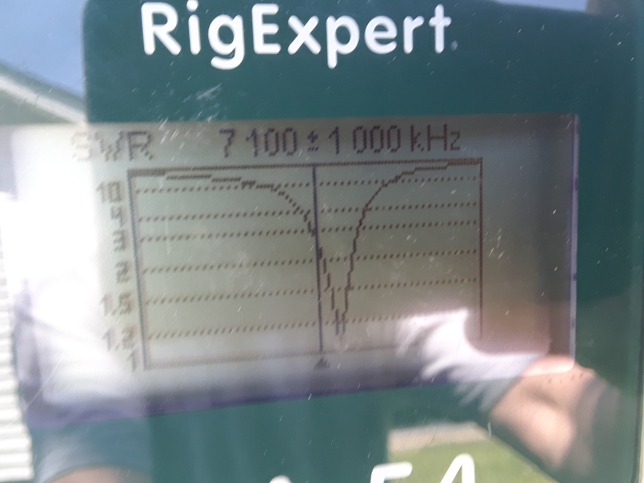
The installation was quite easy. I pulled the antenna up on the tower without the “ends” so the aluminum rods making up the capacitance X-hat wouldn’t get damaged or break off. One rod end was missing already when it fell after the lightning strike. I installed the antenna on the shorter end of the horizontal mast of the PVRC mount in case it worked and I wanted to keep it there. The SteppIR yagi would go on the longer end.
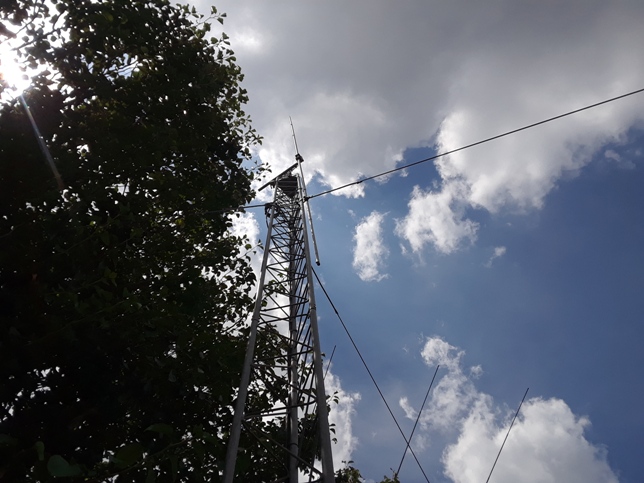
After the main tubing of the antenna was installed, the antenna was rotated on the horizontal mast of the PVRC mount in order to attached the ends containing the loading coil and X-hat. This also allowed the antenna to be tuned. The tubing at the ends of the antenna can be moved in or out to tune for resonance. It took three tries but the antenna was tuned with resonance at 7075 Khz. The antenna was good from 7000-7250 kHz which was better than expected. The next day, Sunday, I corrected the azimuth of the M² OR2800 rotor. It had been off by about 15 degrees.
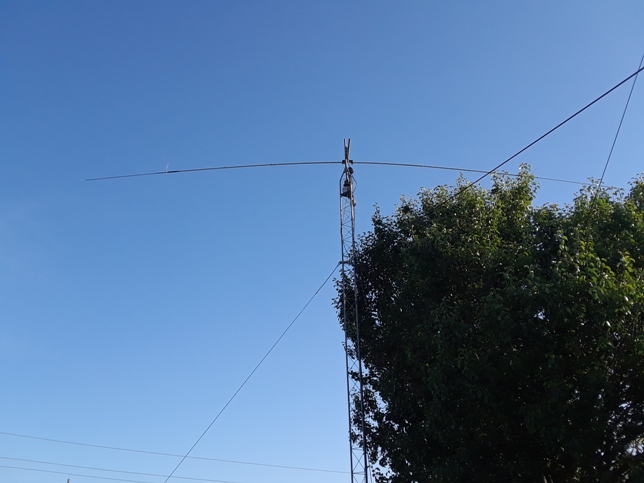
That afternoon I worked several European stations in the SP DX RTTY Contest on 40 meters an hour before sunset. That would have been unheard of with the inverted vee. The signals were strong and the noise was relatively low. I was convince I had my “killer” D40 back!
The original plan was to install the antenna, then remove it before installing the refurbished SteppIR yagi. I could then re-install it back onto this tower or install it ten feet higher on the other tower. It was a big decision and I need time to think about it.
On Monday (April 30th) I had convinced myself to leave the D40 where it was and install the SteppIR yagi next to it. I planned to raise the gin pole that evening after work. But when I got home I changed my mind and leaned toward taking the D40 down and installing it on the other tower instead. I decided to sleep on. The next day, I rationalized that I needed to leave it where it was. I wanted it as far away from my main 3 element SteppIR as I could get it so there would be less interference when operating 20 and 40 meters at the same while SO2R contesting. I also wanted it farther away from the 80-meter inverted vee, which is also on the other tower, for the same reason.
The next morning (May 1) when several Japanese and one Indonesian station answered my CQ’s on 40-meter FT8, it convinced me to leave the antenna where it was and proceed with the refurbished SteppIR yagi installation.